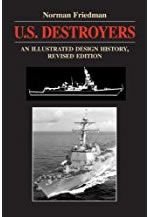USS King (DD-242)
from the right
|
|
USS King (DD-242) was a Clemson class destroyer that took part in the fighting in the Aleutians in 1942-43 then served off the US West Coast for the rest of the war.
The King was named after Frank Ragan King, the captain of the US trawler Richard Buckley when she was sunk during minesweeping operations in the North Sea in 1919. King was lost with his ship.
The King was laid down at Camden by the New York Shipbuilding Corp on 28 April 1919 and launched on 14 October 1920. She was sponsored by Commander King’s widow Allene A. King. She was commissioned on 16 December 1920.
The King departed for the Mediterranean on 2 October 1921, arriving at Constantinople on 22 October. One of her first tasks was to evacuate 300 Greek refuges from Smyrna to Mitylene in November, although this was a full year before the famous fire and mass evacuations. She remained in Turkish waters until June 1923, serving as a station ship.
After her return to the United States the King joined the Atlantic Scouting Fleet, and from then until 1930 she took part in the normal mix of summers on the US East Coast and winters in the Caribbean.
From January 1925 to December 1926 she was commanded by Theodore Stark Wilkinson, who later went on to serve as Director of Naval Intelligence, Commander, Battleship Division 2, Deputy Commander South Pacific Area and commander 3rd Amphibious Force, South Pacific during the Second World War.
On 15 April 1925 she departed for the Pacific to take part in naval manoeuvres around Hawaii.
In the spring of 1927 she was part of the US squadron that operated in Nicaraguan waters to protect US interests during a civil war. Anyone who served on her between 26 April-3 May or 7 May-9 June 1921 qualified for the Second Nicaraguan Campaign Medal.
The King decommissioned at Philadelphia on 10 March 1931, but this didn’t last for long and she recommissioned on 13 June 1932 to join the Pacific Scouting Force. For the next six years she was based in California, and took part in the normal life of the fleet, including exercises in the central Pacific and training cruises for the naval reserve. She was decommissioned for a second time on 21 September 1938.
Second World War
The King was one of many US warships recommissioned on 26 September 1939 after the outbreak of the Second World War. She left San Diego on 13 November to join the Caribbean Neutrality Patrol, but she would spend much of the war in much colder waters!
On 22 February 1940 the King arrived at Norfolk to begin a period of operations with the Neutrality Patrol, based at Boston and Key West. In the autumn of 1940 she returned to the West Coast and operated from San Francisco for the next year. After the Japanese attack on Pearl Harbor she spend five months patrolling along the West Coast.
On 22 May 1942 the King left Mare Island as part of Task Force 8, which escorted the troop transport President Fillmore to the Aleutians. She reached Dutch Harbor on 3 June 1942 and was used for anti-submarine warfare and patrols during the Aleutian summer. She was part of Task Group 8.6 during the bombardment of Kiska and took part in the liberation Attu.
In late November 1943 she ran aground in Kulak Bay. During the rescue efforts the net tender Boxwood (YN-3) suffered minor damage. She was pulled free by the Ute (AT-76) on 27 November.
The King finally left the Aleutians on 22 December 1943, after a year and a half in the frozen north.
She underwent an overhaul and then spent the rest of the war operating as a patrol vessel and forming part of anti-submarine screens along the West Coast.
The King left Treasure Island on 28 August 1945 heading for Philadelphia, where she was decommissioned on 23 October 1943. She was sold for scrap on 29 September 1946.
The King received one battle star for World War II service, for the liberation of Attu.
Displacement (standard) |
1,190t |
Displacement (loaded) |
1,308t |
Top Speed |
35kts |
Engine |
2-shaft Westinghouse geared turbines |
Range |
2,500nm at 20kts (design) |
Length |
314ft 4in |
Width |
30ft 10.5in |
Armaments |
Four 4in/ 50 guns |
Crew complement |
114 |
Launched |
14 October 1920 |
Commissioned |
16 December 1920 |
Sold for Scrap |
29 September 1946 |
 U.S. Destroyers: An Illustrated Design History, Norman Friedmann .
The standard history of the development of American destroyers, from the earliest torpedo boat destroyers to the post-war fleet, and covering the massive classes of destroyers built for both World Wars. Gives the reader a good understanding of the debates that surrounded each class of destroyer and led to their individual features.
U.S. Destroyers: An Illustrated Design History, Norman Friedmann .
The standard history of the development of American destroyers, from the earliest torpedo boat destroyers to the post-war fleet, and covering the massive classes of destroyers built for both World Wars. Gives the reader a good understanding of the debates that surrounded each class of destroyer and led to their individual features.